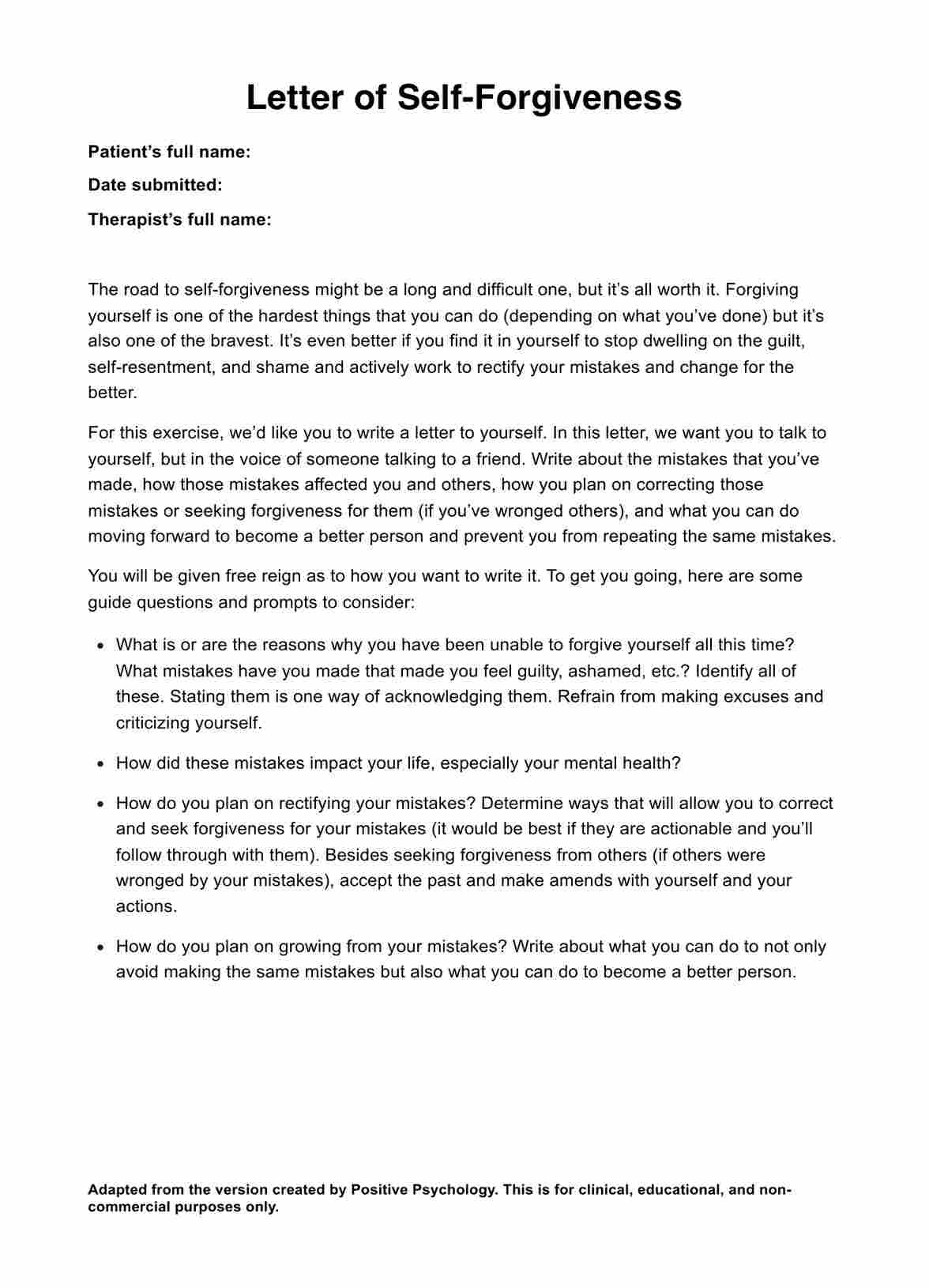That will depend on the person engaging with it. If the person is still not comfortable thinking and writing about whatever mistakes have been haunting them, then it’s likely that they will have trouble writing it. If they have already found the confidence and determination to reflect on their guilt and are willing to let go, they will likely find it easy to write.

Letter of Self-Forgiveness Worksheet
Issue this Letter of Self-Forgiveness Worksheet to your patient to help them work through lingering guilt and unhappiness related to a past event. Learn more about this worksheet through this short guide.
Letter of Self-Forgiveness Worksheet Template
Commonly asked questions
It’s best you give your patient the time and space to finish this. If they need to take it home, maybe that would be best. Just come to an agreement with your patient as to when you should receive a fully accomplished copy.
Yes. If you believe that this worksheet can help you achieve a breakthrough and find self-forgiveness, then by all means, download it. Though, please don’t consider it as a substitute for therapy. If feelings of guilt, shame, and self-resentment are severely impacting your mental health and other aspects of your life, please seek professional help.
EHR and practice management software
Get started for free
*No credit card required
Free
$0/usd
Unlimited clients
Telehealth
1GB of storage
Client portal text
Automated billing and online payments











